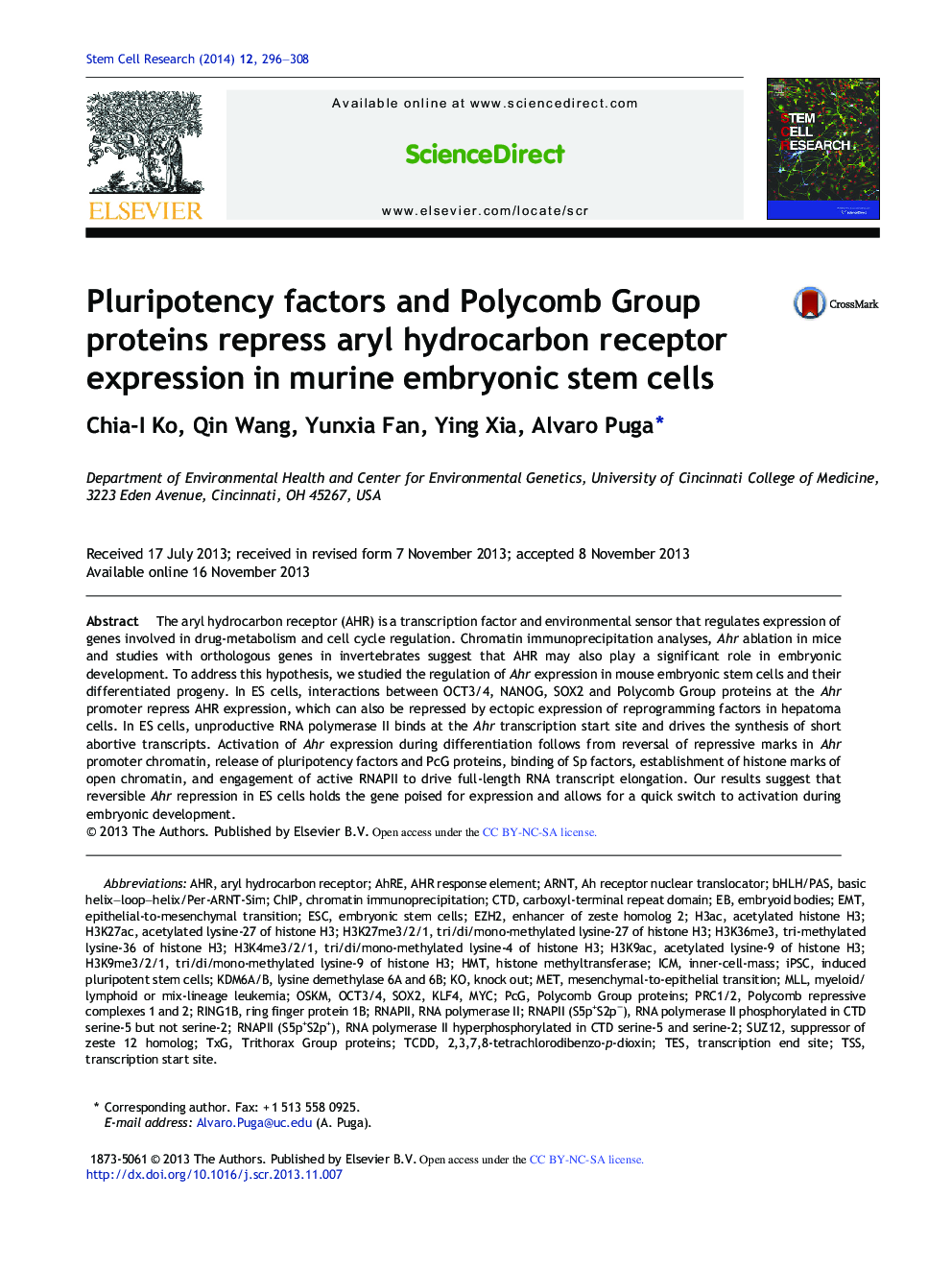| کد مقاله | کد نشریه | سال انتشار | مقاله انگلیسی | نسخه تمام متن |
|---|---|---|---|---|
| 2094595 | 1082028 | 2014 | 13 صفحه PDF | دانلود رایگان |
• Pluripotency factors repress Ahr gene expression in embryonic stem cells.
• Repression depends on Polycomb Group proteins and pausing of RNA polymerase-II.
• Paused RNA polymerase-II generates short Ahr transcript in embryonic stem cells.
• Ahr expression is quickly initiated upon in vitro differentiation.
The aryl hydrocarbon receptor (AHR) is a transcription factor and environmental sensor that regulates expression of genes involved in drug-metabolism and cell cycle regulation. Chromatin immunoprecipitation analyses, Ahr ablation in mice and studies with orthologous genes in invertebrates suggest that AHR may also play a significant role in embryonic development. To address this hypothesis, we studied the regulation of Ahr expression in mouse embryonic stem cells and their differentiated progeny. In ES cells, interactions between OCT3/4, NANOG, SOX2 and Polycomb Group proteins at the Ahr promoter repress AHR expression, which can also be repressed by ectopic expression of reprogramming factors in hepatoma cells. In ES cells, unproductive RNA polymerase II binds at the Ahr transcription start site and drives the synthesis of short abortive transcripts. Activation of Ahr expression during differentiation follows from reversal of repressive marks in Ahr promoter chromatin, release of pluripotency factors and PcG proteins, binding of Sp factors, establishment of histone marks of open chromatin, and engagement of active RNAPII to drive full-length RNA transcript elongation. Our results suggest that reversible Ahr repression in ES cells holds the gene poised for expression and allows for a quick switch to activation during embryonic development.
Journal: Stem Cell Research - Volume 12, Issue 1, January 2014, Pages 296–308
